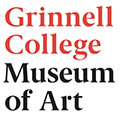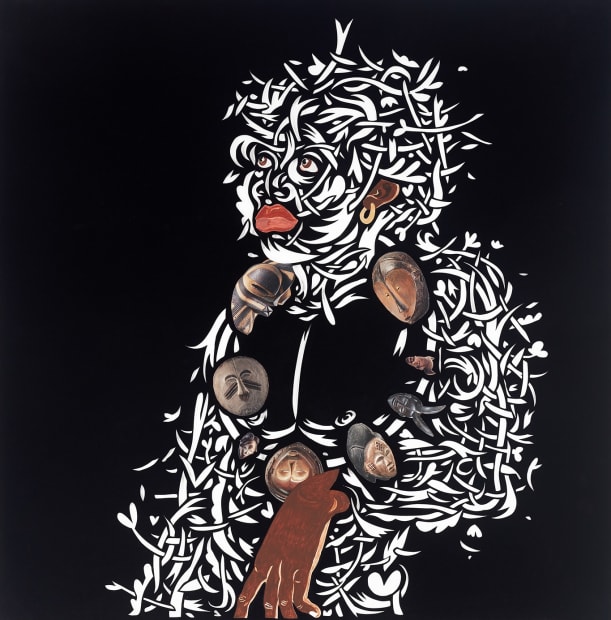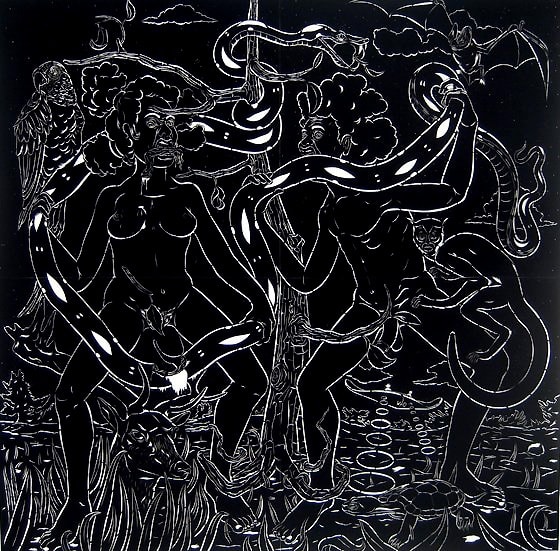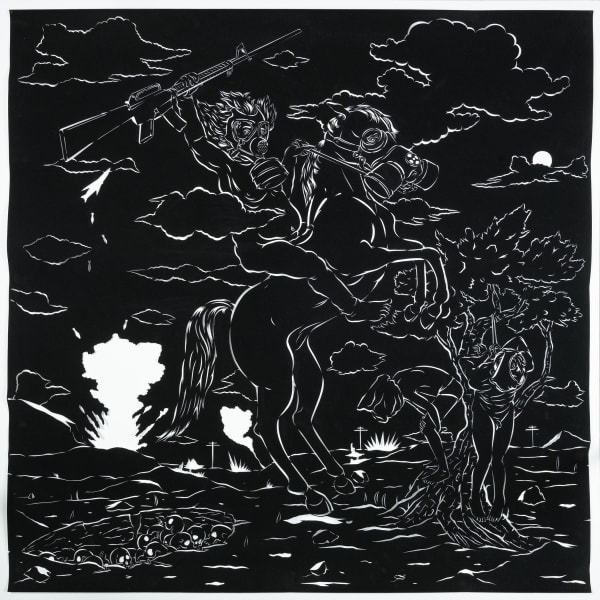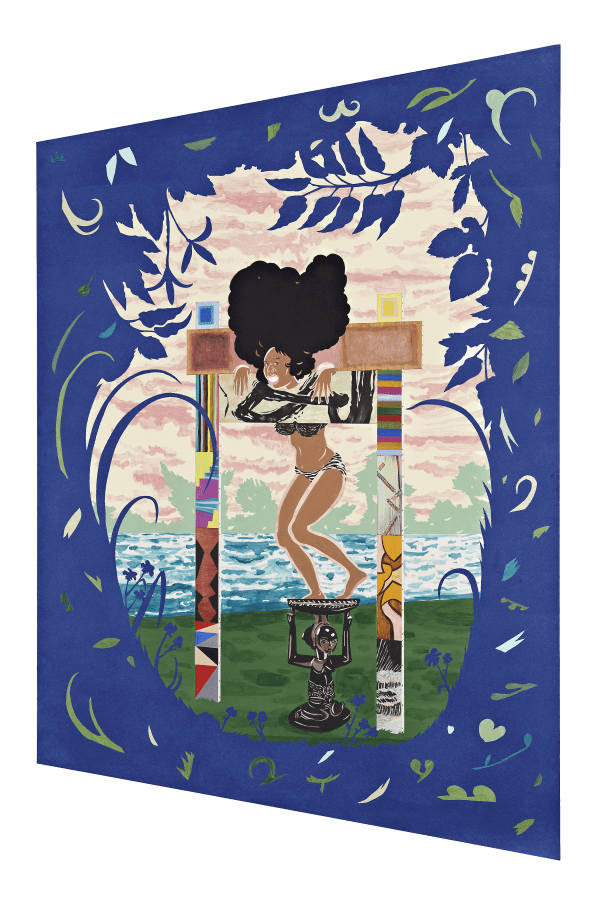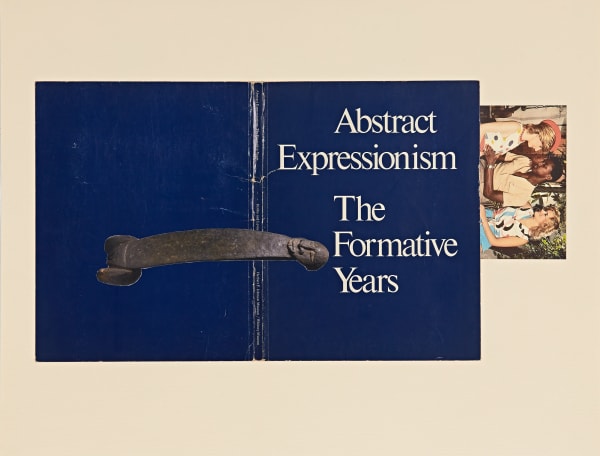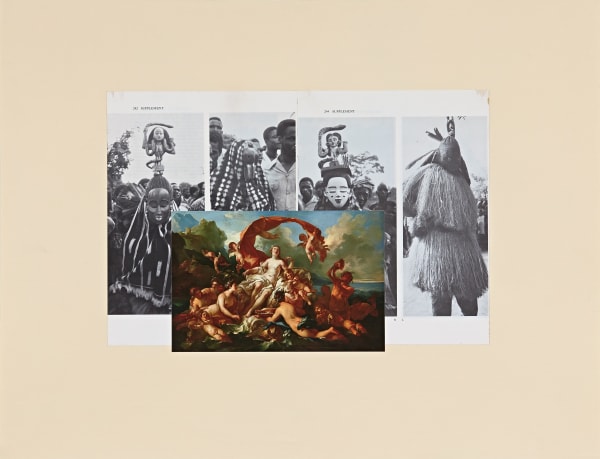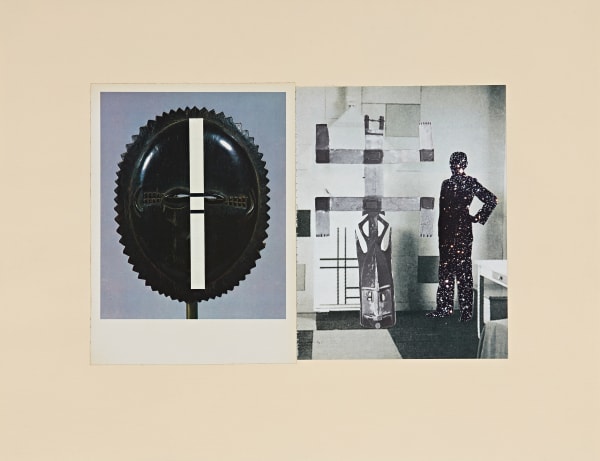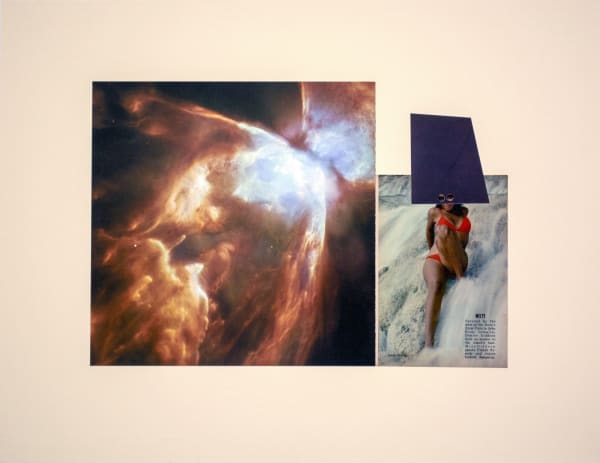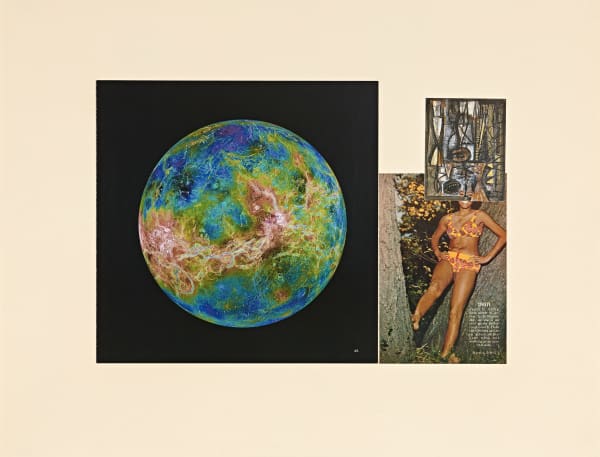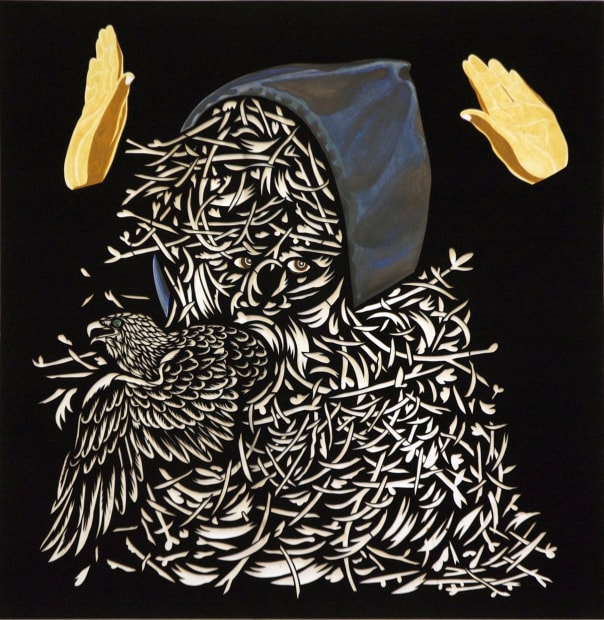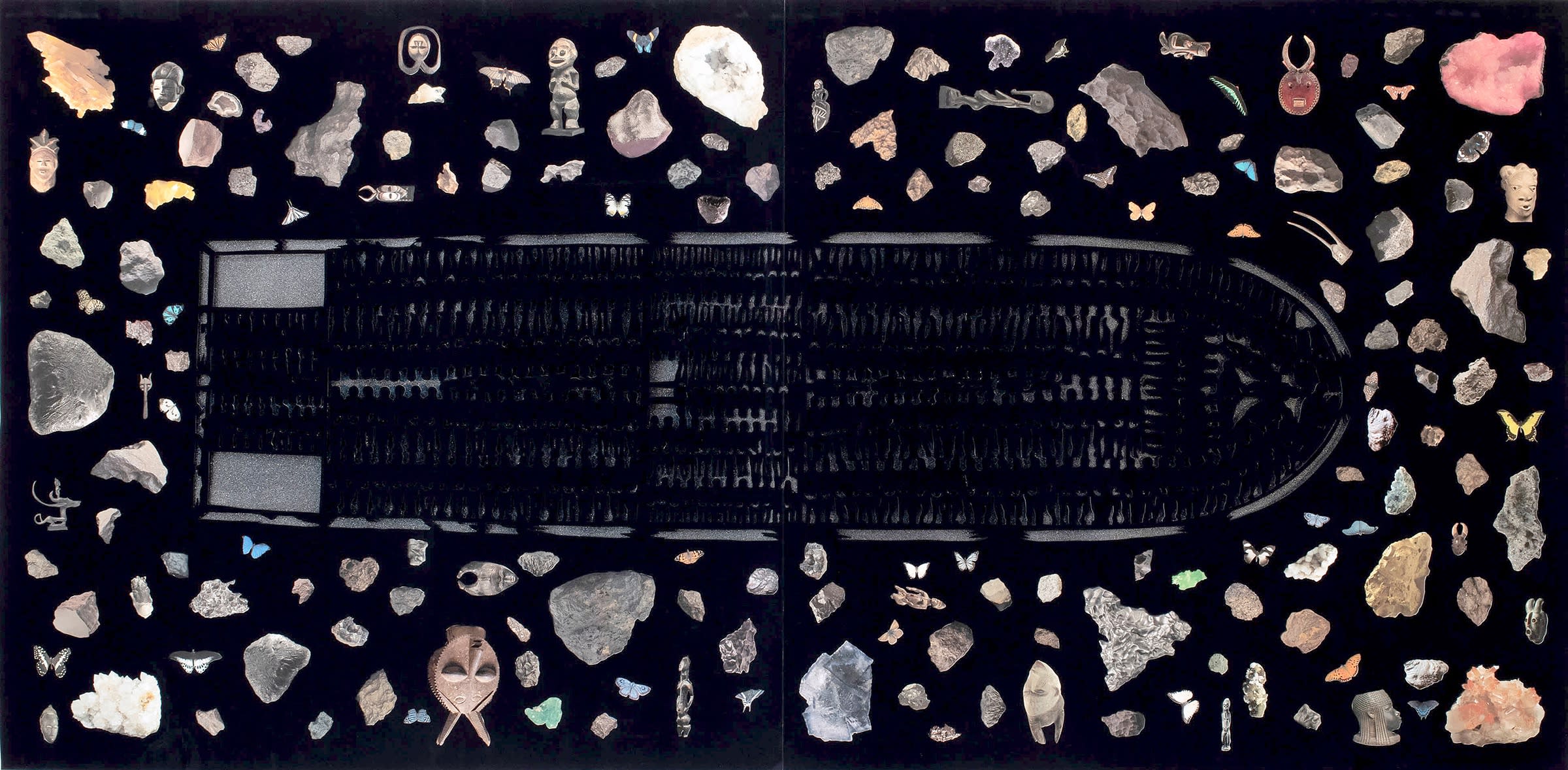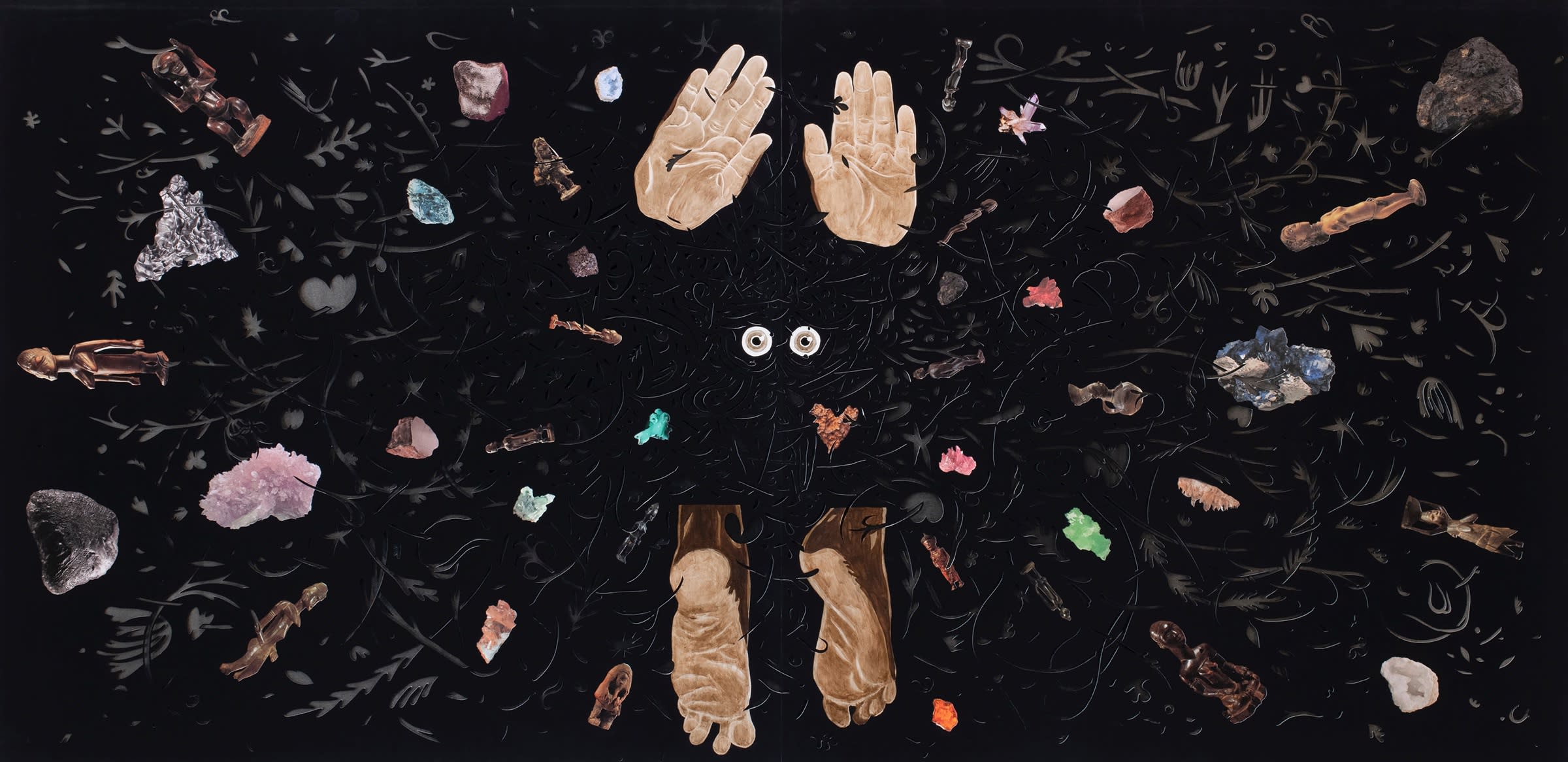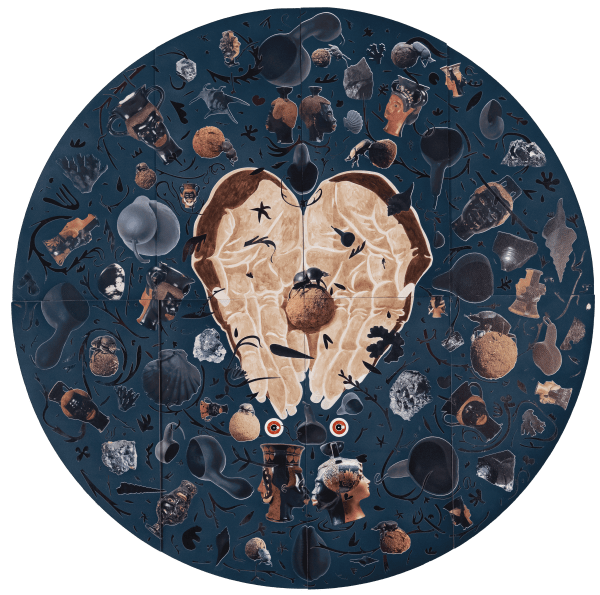-
William Villalongo
Myths and Migrations
-
To cut and paste over and under, to cut and see through, to cut and back up, to cut and paint in and on is to enact on real material the felt experience of moving though the world in a racialized body, with a hope that it conveys something of the precarity of life itself and how we are all implicated in the struggles of others.
— WILLIAM VILLALONGO
Myths and Migrations presents almost 20 years of artmaking by William Villalongo, including figural and narrative paintings, works on paper, and sculpture that incorporate flocking, cut paper, and collage. His practice is informed by research in the natural and social sciences, mythologies and folklore, popular culture imagery, and the history of art — particularly African objects and their appropriation in Euro-American art movements — exploring invisibility and revelation of Black presence against the backdrop of race. Bodies, objects, and interstitial spaces in Villalongo’s work help navigate ideas about seeing and being seen, while also connecting contemporary concepts of presence and erasure with their antecedents through time and across cultures.
He works in awareness and in relation to recurring acts of police and vigilante violence against Black and Brown communities and the resulting demands for accountability. Far from seeking more discord, Villalongo transforms polarization into creative inspiration, making room for reflection, healing, and metamorphosis. It is an honor to present his creative voice at a time when history in the United States — who writes it, who teaches it, and who and what gets prioritized or erased from it — is at the forefront of public debate. Villalongo proposes that history is not something to excise or weaponize, but to conceive as an inheritance, a vital tool we can use to reckon with past injustices and to create something new.
This exhibition was organized by the Grinnell College Museum of Art.
-

William Villalongo, Obertura de la espora (time dancer), 2017 (detail)
-
Works in the Exhibition
Click on each work for more information
-
Early Cut Paper
-

THE WILD, WILD WEST! (DETAIL)
-
Early Painting
-

William Villalongo, Higher Ground, 2007
-

WILLIAM VILLALONGO, JUBILEE, 2010
Featured Works:
JUBILEE, 2010
With the Bathers series I was thinking about "Primitivism," and how art history tells a story about Western abstract art.
I was thinking about how these terms are inherently problematic, and perhaps even my work at times feels problematic because of it. I was really thinking of how I could mess up this very convenient story that takes us from these Nymph and Bather classical themes into this kind of “radical” space of abstraction in a way in which, magically, Africa doesn't exist in it. A kind of rupture happens in European art and then there's another rupture when you get to the Americas, but it’s all a coincidence that there are affinities with African art. So, the idea came to me of making a type of self-fashioned mythology of a world of women who are using abstract paintings as utilitarian objects, fashioning them as masks, clothing, as building materials for their houses. At the heart of it I was thinking about the story of painting. All of these things that you would see if you walk through the Metropolitan Museum.
I was questioning how to change the protagonists in that story; fashioning a different set of terms for that story.
-

William Villalongo, Olympia's Window, 2015
-
RE: History, 2015
14 collages
-

William Villalongo, re: History--Affinities (Picasso, Dan), 2015
-

William Villalongo, re: History--Jet (Artifact 5), 2015
-
Work since 2016
-

William Villalongo, Speak No Evil, 2016
-

William Villalongo, Obertura de la Espora (Time Dancer), 2017
-

WILLIAM VILLALONGO, ZERO GRAVITY 2, 2018
-

William Villalongo, Power Lawd!, 2019
-

WILLIAM VILLALONGO, Black Metamorphosis 1452, 2020
-
The Mothership Connection, 2020
-

William Villalongo, The Mothership Connection, 2020
-

William Villalongo, The Mothership Connection, 2020 (left detail)
An Excerpt from Tiffany Barber's Catalogue essay, Deep Cuts:
The Mothership Connection (2020), elaborates the artist’s interests in existential Blackness, diaspora, migration, deep time, and transformation. The piece juxtaposes a starburst form on the right with a black-on-black reproduction of the now iconic schematic of the Brookes slave ship loaded to capacity with bodies on the left. The Mothership Connection merges pre-slavery with post-slavery conditions of Black being through image and text. While the Brookes image became an emblem for British abolitionists in the late 1700s, the title of the piece references the Parliament Funkadelics’ eponymous album from 1975. P-Funk’s “Mothership Connection” envisioned outer space as a freedom frontier for African Americans, and both the vinyl record and its spaceship cover art have consequently become touchstones for Afrofuturism, a cultural and political movement that has gained considerable currency since the 1990s.
-

William Villalongo, The Mothership Connection, 2020 (right detail)
An excerpt from an interview with LeRonn Brooks:
Brooks: It seems to me that each fragment, or each piece, can be thought of as a lead towards an investigation. It's like hearing a voice and trying to find where the body is that made that voice. I think in terms of genealogical research and the ways in which you can find a name on one census record, but that name may change on another census record because someone doesn't want to write that person's name down properly. So, you have a lead, but that lead brings you toward worlds that may not be fact, because it may not be that person's name. But there’s a way in which context can give you that spur. It's leading you towards this investigation, “what of the Black presence here?” That sounds really generative.
Villalongo: It has been. That's how I came to the idea of claiming with the velvet material. As I coat objects with velvet fibers it becomes a manifestation of them as “Black” things.
-

William Villalongo, The Mothership Connection, 2020 (Right center detail)
-
2021-2023
-
Sculpture
-

William Villalongo, Beacon, 2022
-
Video
-
William Villalongo, Water Root, 2012HD BlueRay, 6:53 min, Edition of 5
-
About the artist
William Villalongo
Photo: Argenis Apolinario, NYC
-
About the Curator
Daniel StrongDaniel Strong has been the Associate Director and Curator of Exhibitions at the Grinnell College Museum of Art since 1999. He holds M.A.s from Williams College/Clark Art Institute and the Department of Art & Archaeology, Princeton University. He added the first piece by William Villalongo, The Wild, Wild West!, to the Grinnell College Museum of Art's collection in 2009; the second, Obertura de la Espora (Time Dancer), in 2018; and the third, The Mothership Connection, in 2021. The exhibition is presented in collaboration with the artist and Susan Inglett Gallery, New York.
Curated by Daniel Strong, Associate Director and Curator of Exhibitions, Grinnell College Museum of Art
Current viewing_room
